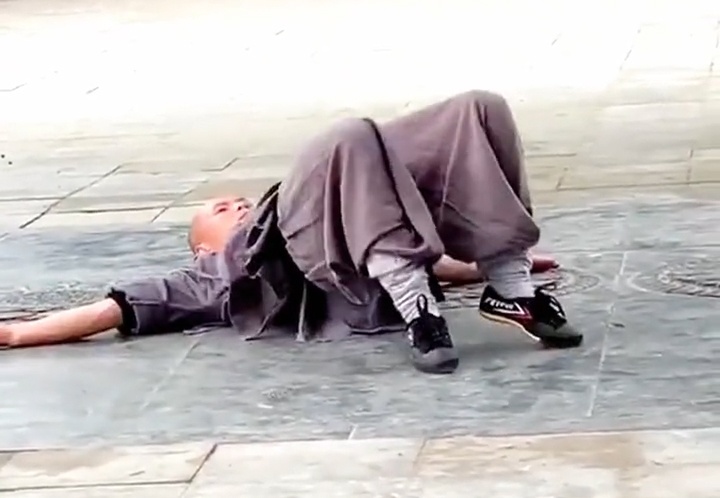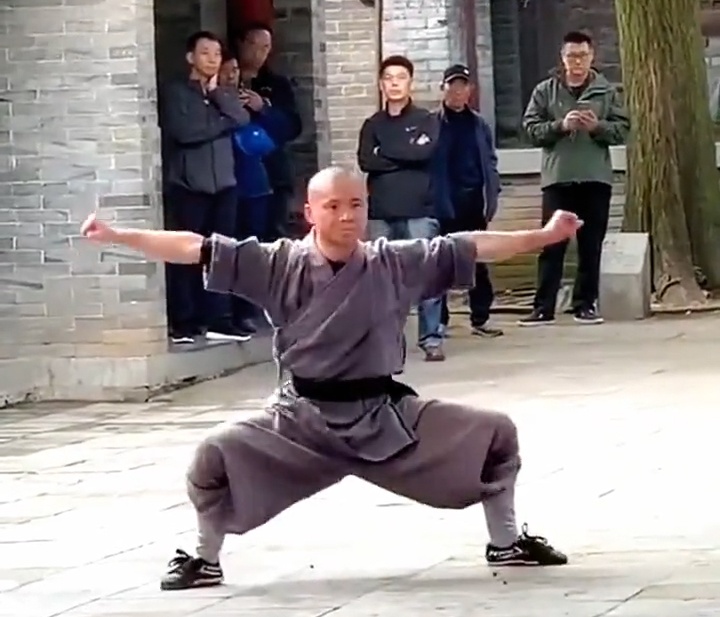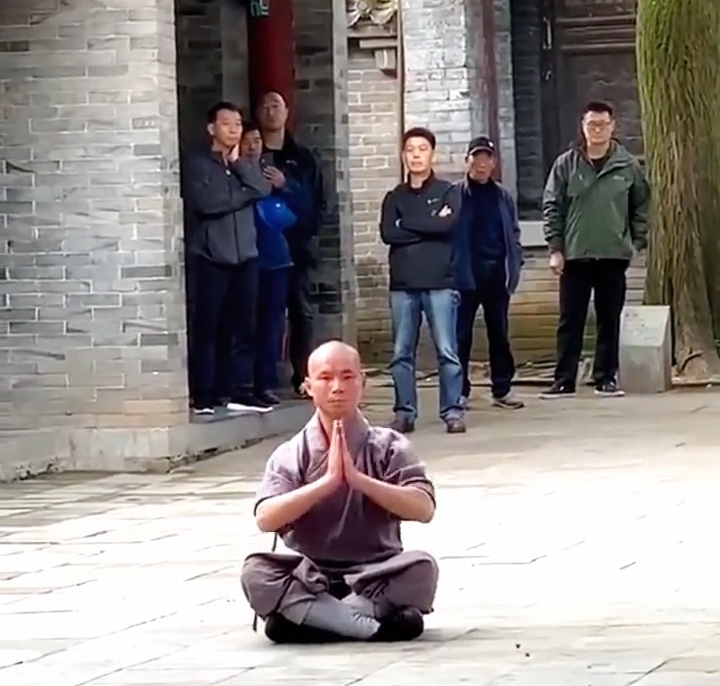Why Learn Ditang Quan? Beyond Just Falling Down
Unconventional Combat Strategy: Ditang Quan specializes in defeating standing opponents by strategically going to the ground, using surprise and leverage.
Devastating Ground Techniques: Master leg sweeps (扫堂腿, Sǎo Táng Tuǐ), scissor take-downs (金绞剪, Jīn Jiǎo Jiǎn), joint locks, and strikes from unexpected angles.
Superior Falling & Rolling Skills: Learn essential Tumbling Techniques (跌扑翻滚, Diē Pū Fān Gǔn) to absorb impact safely, recover quickly, and turn a fall into an attack. Vital for self-defense and any physical activity.
Enhanced Agility, Flexibility & Coordination: The acrobatic nature of Ditang Quan dramatically improves spatial awareness, body control, and overall athleticism.
Confidence in Adversity: Training to fight effectively from disadvantaged positions builds immense mental resilience and practical self-defense capability.
Unique Physical Challenge: Offers a demanding yet rewarding workout unlike most standing martial arts.

What to Expect in a Structured Ditang Quan Curriculum
A well-designed Ditang Quan course progresses systematically, prioritizing safety and foundational skills before advancing to complex combat applications. Here’s a typical learning path:
Phase 1: Building the Foundation - Safety & Fundamentals (Beginner Level)
Mastering the Fall: Tumbling & Rolling Basics (Diē Fǎ / Gǔn Fǎ):
Emphasis: Safety first! Learning to fall without injury is paramount.
Key Skills: Forward rolls (前滚翻), backward rolls (后滚翻), sideways falls (侧倒), break-falls (受身). Building confidence in controlled descent.
Focus: Smooth execution, protecting the head, spine, and joints, dissipating force.
Basic Ground Positions & Movement:
Emphasis: Developing mobility and stability once on the ground.
Key Positions: Seated postures, crab-walking, shrimping (hip escapes), basic guard positions.
Focus: Efficient movement, maintaining balance, understanding angles from the ground.
Introduction to Foundational Techniques:
Emphasis: Safe, controlled practice of core actions.
Key Techniques: Basic leg sweeps targeting ankles/calfs, simple takedowns initiated from low positions, fundamental kicks from the ground (e.g., upward kicks).
Focus: Coordination, timing, understanding leverage points, controlled execution with partners.
Phase 2: Developing Flow & Application (Intermediate Level)
Linking Movements: Basic Forms & Sequences:
Emphasis: Stringing rolls, falls, sweeps, and recoveries into fluid combinations. Learning short Ditang Quan forms .
Focus: Smooth transitions between techniques, maintaining momentum, breath control, building endurance.
Keyword Integration: Ditang Quan training often includes learning traditional sequences that embody the art's principles.
Core Combat Techniques - Sweeps & Takedowns:
Emphasis: Refining and applying key Ditang Quan weapons.
Key Techniques: Full-power sweeps (扫堂腿 - targeting knees/thighs), scissor takedowns (金绞剪), leg reaps (勾踢), and trips. Drilling entries and setups.
Focus: Power generation, timing, off-balancing the opponent, safe application with partners.
Ground Control & Follow-Ups:
Emphasis: Capitalizing after the takedown.
Key Skills: Maintaining dominant ground positions, applying basic pins, transitioning to strikes (punches, elbows, kicks from the ground) or joint locks.
Focus: Control, positioning, understanding leverage, and safe submission application.

Phase 3: Practical Integration & Advanced Skills (Advanced Level)
Complex Forms & Acrobatics:
Emphasis: Learning longer, more intricate Ditang Quan forms. Introducing higher-level acrobatics like aerial cartwheels (侧空翻) or butterfly twists (旋子) – always built upon a solid safety foundation .
Focus: Artistic expression, advanced coordination, power, and stamina within the sequences. Understanding combat applications embedded in the forms.
Strategic Sparring & Scenario Training:
Emphasis: Applying techniques dynamically against resisting partners.
Key Methods: Pre-arranged sparring drills focusing on entries, sweeps, takedowns, and ground transitions. Situational training (e.g., defending against punches while going low, multiple attackers).
Focus: Timing under pressure, distance management, adapting techniques, developing fight strategy, and safe training protocols. This is the heart of practical Ditang Quan instruction .
Weapon Defense & Integration:
Emphasis: Applying Ditang Quan principles against weapons or incorporating simple weapons training (like short staff).
Focus: Using low entries to evade attacks, leg sweeps to disarm, and ground mobility to create angles against armed opponents.
Conditioning for Ground Fighting:
Emphasis: Strengthening muscles crucial for Ditang Quan: core, hips, legs, neck. Improving flexibility and explosive power for sweeping and recovery.
Focus: Functional exercises mimicking tumbling and ground combat movements.
The Unique Training Experience of Ditang Quan Classes
Mat-Based Training: Safety requires proper flooring (mats).
Progressive Skill Building: Master falling before attacking; learn simple sweeps before complex combinations.
Emphasis on Fluidity: Rolls become takedowns; falls become evasions. Motion is constant.
Practical Self-Defense Focus: Techniques are drilled with realism and resistance in mind.
Acrobatic Foundation: While combat is primary, the skills enhance overall body control.
Finding the Right Ditang Quan Course For You
When searching for "Ditang Quan classes near me," "learn Ditang Quan," or "Ditang Quan training," prioritize schools that offer:
Experienced & Safety-Conscious Instructors: Look for teachers with deep lineage knowledge and a proven track record of safe instruction.
Clear Progression: A curriculum that systematically builds from fundamentals to advanced applications.
Strong Focus on Falling & Rolling: Mastery of Diē Fǎ/Gǔn Fǎ is non-negotiable.
Practical Application & Partner Drills: Techniques must be pressure-tested safely.
Positive & Supportive Environment: Learning challenging ground skills requires encouragement.
Adequate Facilities: Proper mats are essential.
Ready to Roll? Start Your Ditang Quan Journey
Ditang Quan offers a thrilling and uniquely effective approach to martial arts. A dedicated Ditang Quan course provides the structured path to unlock its secrets: the art of falling safely, the power of the leg sweep, the strategy of ground combat, and incredible acrobatic agility. By focusing on the core curriculum – mastering falls and rolls, building foundational sweeps and takedowns, learning flowing sequences, and applying skills in practical drills – you embark on an empowering journey of physical and mental development. Don't just learn to fall; learn to fight from the ground up. Find authentic Ditang Quan instruction and experience the power and flow of this extraordinary art for yourself. Search for Ditang Quan classes today and inquire about introductory lessons!



